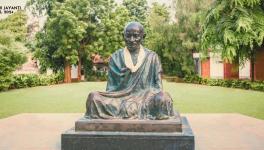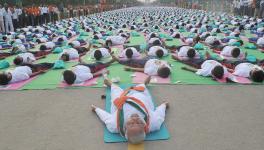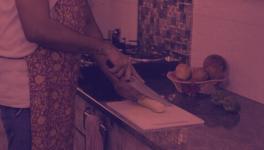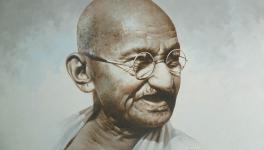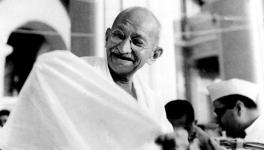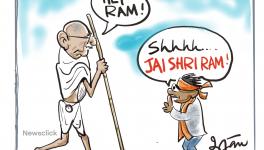India’s first Prime Minister in stoic sculpture: When I walked into Mumbai’s Saffron Art Gallery….
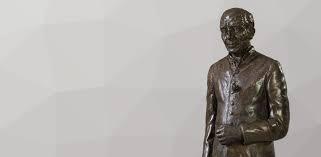
… I knew I would be taken in by artist Narayan Sridhar Bendre’s painting. The large canvas on display is among his various, remarkably striking representations of rural women set out in beautiful compositions. This one uses the technique of pointillism to infuse the work with an ethereal quality of restfulness, though the women at rest are not free of their burdens.
Right across Bendre is a sublime work by painter Jehangir Sabavala. I am also in the company of other modern Indian masters like the British-Indian artist F.N. Souza. Yet nothing could have prepared me to walk into an anteroom, coming face to face with Jawaharlal Nehru or Panditji – India’s first Prime Minister, who loved children, and with whom I share my birthday. In school I rued the fact, because my birthday dress was just one among the many “party dresses”, as opposed to the regular school uniform, on Children’s Day: November 14.
Thus, I prize my first introductions with Nehru.
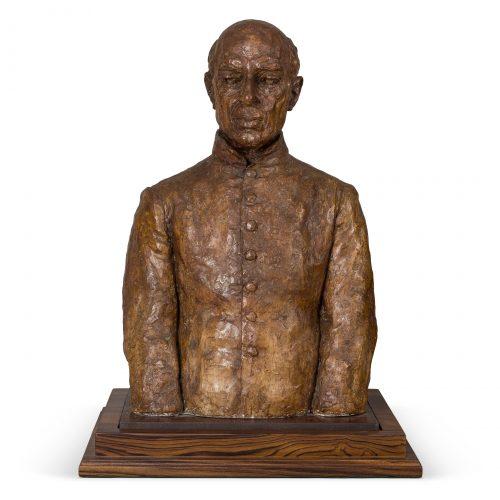
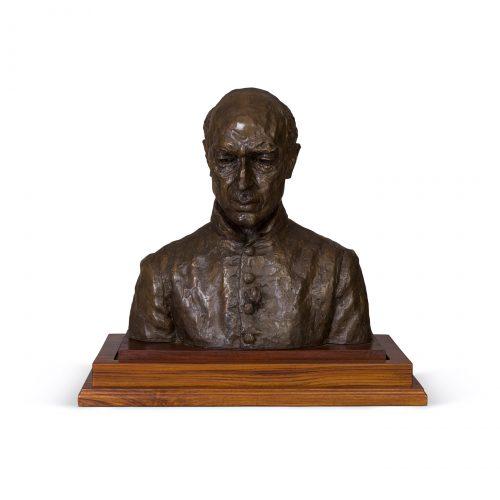
I looked closely at the sculptures. These were unusual representations of Nehru. The only other sculpture of Rajendra Prasad, the first President of India, in this section of the gallery, is more familiar, with his overtly smiling, bulging cheeks.
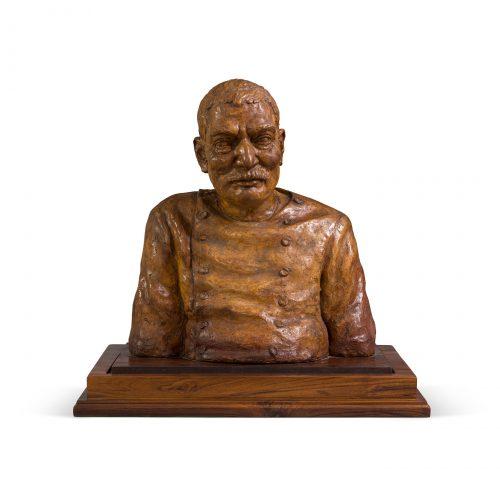
Not so with the busts of Nehru.
For one, there is a certain stoic-ness. The eyes glint when seen from the front. There is the familiar jawline, an understated elegance, an intellectual sharpness, but there is no joy. The thick lips are the second feature that register the most, softening one of the busts a tad bit if looked at sideways; and then, depending on your angle, you might catch a hint of a smile in an otherwise stolid affair.
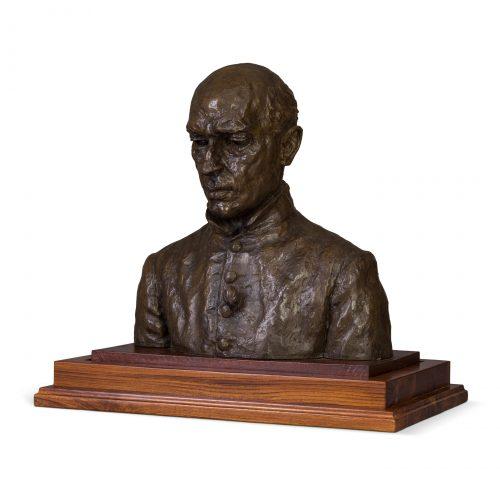
Chacha Nehru, as children fondly knew him, had always been a polarising figure, revered and hated; his name often linked with Gandhi, hissed out in venomous breaths. Today, this poison has spread more boldly than ever.

Then there is the nearly wilted rose on the smaller of the two busts. The experience at first sight is very different from most popular representations of Nehru. The statue in the middle of the two busts is made gentler, more suggestive of the familiarity found in Prasad’s sculpture. The two busts on either side of the statue are in counterpoint to Nehru’s popular persona, hints of which are caught in his more affable statue. Also, the rose studded in his “Nehru Jacket” – his classic mandarin collared coat, may yet be fragrant. I peered to read the artist’s name.
Fredda Brilliant.
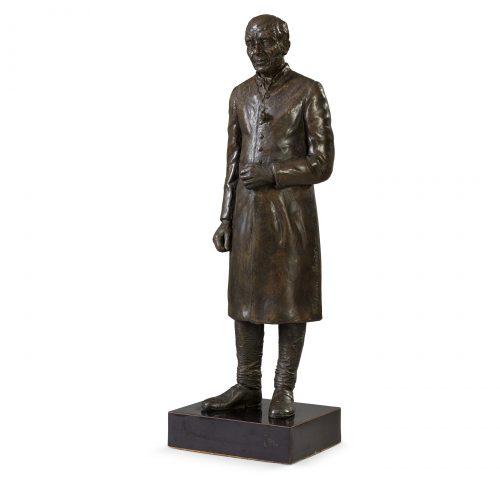
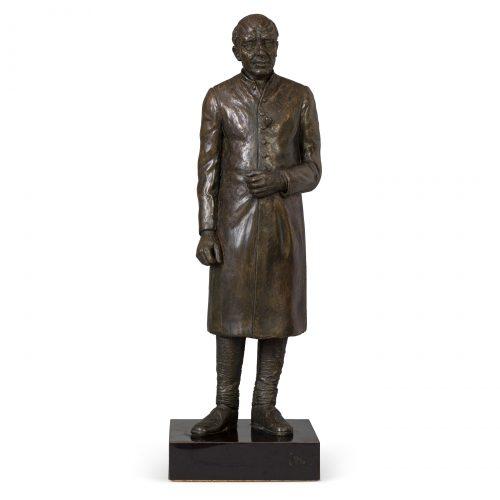
I had not heard of her but a quick dive into the digital realm soon revealed that she was Polish and Jewish; she was multi-talented, and was no stranger to India. She had sculpted many a famous personality, and is particularly known for her bronzes of Mahatma Gandhi, one of which is located in the Supreme Court of India. Gandhi’s skeletal body: based no doubt on one of his long fasts, distinctly emaciated, yet quietly resilient. There are plaster and resin sculptures of Gandhi in this show too, which include the artist’s maquettes of the bronze statue situated in London’s Tavistock Square. The Gandhi sculptures may yet present a larger aura of sacrifice and sainthood associated with the Mahatma and found the world over.

In another section rests a plaster and resin head of academic, politician and diplomat Vengalil Krishnan Krishna Menon, Nehru’s confidant and comrade, a controversial yet brilliant figure. In the same section also, look out for the Eyes of Indira resting on a wooden base, the heart shape on the forehead descending into a prominent nose. Nehru’s strong-headed daughter is palpably visible.
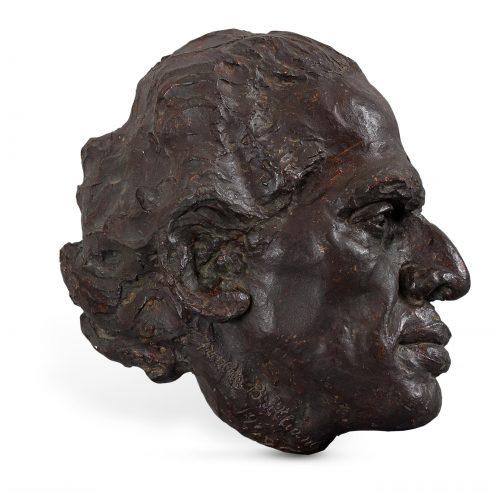
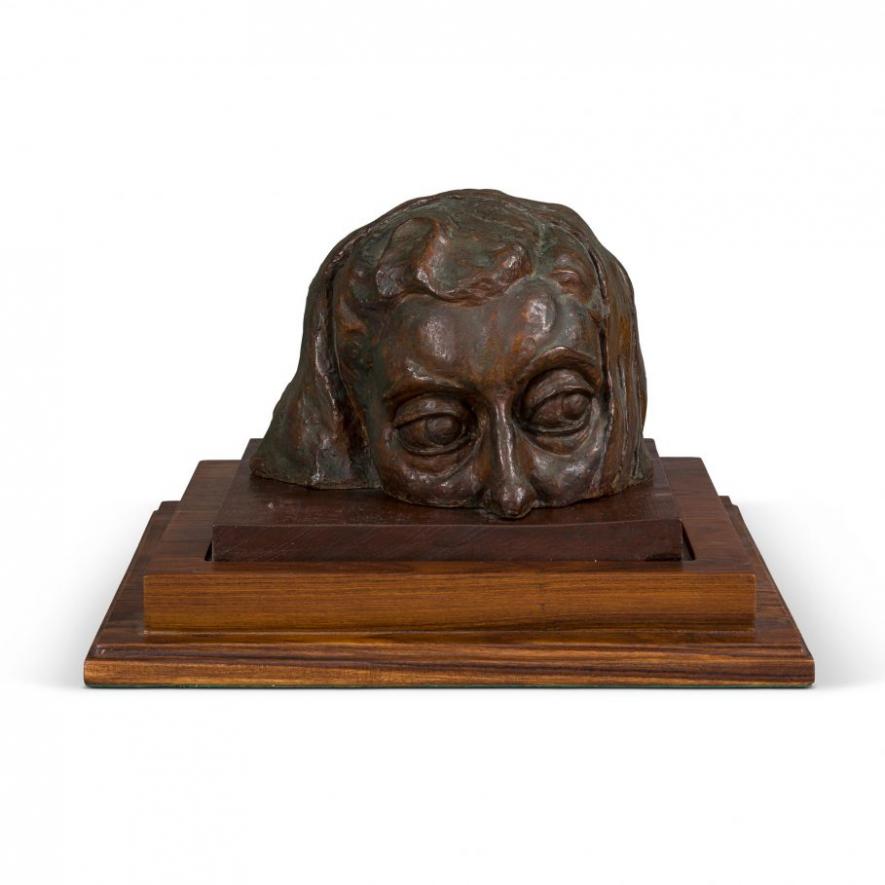
The Nehru busts sidestep any idolisation. It appears to have been eschewed quite determinedly for the artist’s own appreciation of the subject and not simply as a witness to a hallowed figure. When Nehru had sat for Brilliant, he had commented on her passion to work, like a “mad woman” easily driven to laughter, tears, and anger.
As I continued to look at the three sculptures of Nehru’s, it also occurred to me that Chacha Nehru, as children fondly knew him, had always been a polarising figure, revered and hated; his name often linked with Gandhi, hissed out in venomous breaths.
Today, this poison has spread more boldly than ever. It spews and erases the history of a modern nation that no one better than Nehru had heralded and sought. In fact, Modern Indian Art is an intrinsic part of this endeavour, progressive and adventurous in equal parts. As the present forebodings gather darker clouds, what might be the experience of looking on at these sculptures? There is no heroism, but there is a transfixing rawness of both wisdom and fortitude.
Fredda Brilliant’s artistry may be contemplated thus.
The exhibition comprising other masterpieces is on view at the Saffron Art Gallery in Mumbai till September 4. The sculptures mentioned in this article can be seen here in lots 61-75. The live auction will take place in Delhi on September 17 with the possibility of bidding online.
Deepa Punjani is a lawyer having a keen interest in the intersections between law, politics, culture, and the arts, and in the dialogues possible between the judiciary and civil society
Get the latest reports & analysis with people's perspective on Protests, movements & deep analytical videos, discussions of the current affairs in your Telegram app. Subscribe to NewsClick's Telegram channel & get Real-Time updates on stories, as they get published on our website.









